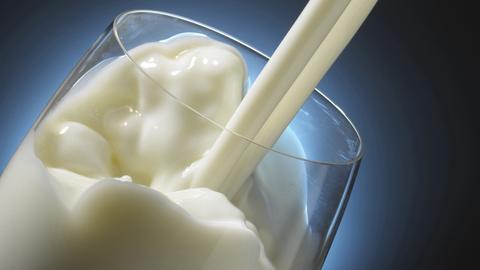VERIFY – YOU’VE GOT QUESTIONS, WE’LL FIND ANSWERS
A 9NEWS project to make sure what you’ve heard is true, accurate, verified. Want us to verify something for you? Email verify@9news.com
THE QUESTION
A new study from a Boulder-based group on the safety of raw milk caught our eye.
The researchers claim people who drank or ate unpasteurized dairy in the United States from 2009 to 2014 were 840 times more likely to contract a foodborne illness and 45 times more likely to be hospitalized than pasteurized dairy consumers.
That’s a startling number – especially given the rise in popularity of unpasteurized dairy products.
Our Verify team decided to delve into those numbers to decipher whether it’s a risk to drink raw milk.
WHAT WE FOUND
The first thing our Verify team did was set a definition for raw dairy.
Raw milk and cheeses are non-pasteurized products. Pasteurization is a process designed to kill bacteria by heating milk to a specific temperature for a set amount of time.
Then, we interviewed two of the study’s researchers, Solenne Costard and Francisco Zagmutt.
They landed on raw dairy as a study subject because of its increase in popularity.
“When people change their consumptions patterns, people like us are interested in knowing what are the impacts of those changes,” Zagmutt said.
What they found was 96 percent of the 760-annual dairy related illnesses (E-Coli, Salmonella, Listeria and Campylobacter) reported by the Centers for Disease Control from 2011 to 2014 came from unpasteurized milk or cheese.
“If you are to consume raw milk or cheese you are basically 800 times more likely to suffer from an illness due to that than the consumer of pasteurized milk or cheese,” Costard said.
That sounds alarming, but context is key.
About 10.2 million people or 3.2 percent of the U.S. population consumed unpasteurized products during those years, according to the CDC.
That means raw dairy consumers had a one in 13,972 chance of getting sick while pasteurized consumers had a one in 10 million chance.
Both of those are actually small risks when compared to the risk of death from everyday tasks, according to the Insurance Information Institute:
Driving a car (1 in 113 chance of dying)
Falling down the stairs (1 in 1,797 chance of dying)
Flying on an airplane (1 in 9,737 chance of dying)
Accidentally discharging a firearm (1 in 7,944 chance of dying)
If you live in Colorado, you’re also more likely to be struck by lightning.
And when it comes to foodborne illnesses, most come from undercooked meats and unwashed vegetables, according to the CDC.
IF YOU GET SICK
While it’s rare for dairy drinkers in general to fall ill from these products, the illnesses that travel in dairy can leave lifelong scars.
“We decided to start drinking raw goats’ milk because my son had a dairy allergy,” Mary Pierce said.
The Boulder mother of two checked out the farm and thought she did her due diligence. Three months later her kids got sick.
“My daughter got really sick,” Pierce said. “Vomiting, diarrhea, just very lethargic.”
The hospital tested both children and discovered they had E-Coli.
“They each spent three weeks in the hospital on dialysis,” Pierce said.
Her kids, then ages 2 and 5, developed hemolytic uremic syndrome -- a potentially deadly complication that occurs in five to 10 percent of E-Coli cases, according to the CDC.
“To watch your 2-year-old lay in bed bloated and lethargic, not even talking to you or responding much … ,” Pierce said. “Now I know that it’s really serious.”
That was in 2010.
Pierce thought her family had put the incident behind them until her daughter’s pediatrician tested her kidneys five months ago. The labs showed her kidney function was just 55 percent.
“Thankfully nobody was home, I was able to yell and scream and throw things and have my fit,” Pierce said. “Their first labs looked pretty bad.”
Things are better today. Her daughter is on medication, and her labs have improved.
Listeria, another bacteria sometimes found in unpasteurized dairy, can be deadly.
In May, the CDC reported two people died after eating raw cheese made by Vulto Creamery.
QUESTIONING THE CDC DATA
Sally Fallon disputes the CDC’s position that raw dairy products pose a greater safety risk.
She heads the Weston A Price Foundation, which advocates for the consumption of raw milk, against the use of infant formula and against childhood vaccinations.
“Very often, if somebody gets ill and they have drunk raw milk, that’s as far as they go,” Fallon said. “They assume it was caused by raw milk and don’t do any further testing.”
The CDC and the Colorado Department of Public Health and Environment both have protocols for investigating a foodborne illness.
These procedures include testing the suspect milk or cheese to see whether it contains the same strain of bacteria.
Zagmutt and Costard are also confident in the CDC’s numbers.
“The only way we see this study could be biased, or there could be problems with the CDC data, would be really if there was a big, a really big difference in reporting of cases from people who drink pasteurized milk versus people who drink unpasteurized milk,” Zagmutt said.
Whether raw dairy poses a greater health risk or not, Fallon said there are health benefits to raw dairy.
She referenced a European study by a group of doctors published in the Journal of Allergy and Clinical Immunology. The study claims unprocessed cow’s milk could protect kids from asthma and allergies.
However, it only recommends giving unpasteurized products to children if “the health hazards of raw milk could be overcome.”
Other researchers dispute the study’s findings.
John Lucey, a professor of food science at the University of Wisconsin and the director of the Wisconsin Center for Dairy Research, wrote a paper contradicting the European study’s findings.
His paper claims the study didn’t control for the fact that most of the kids were raised on farms.
“It is known that farm kids also come into contact with a wider range of bacteria/allergens compared with children who live in modern cities,” according to Lucey’s report. “It is possible that early exposure to these farm allergens could help some infants develop a more robust immune system.”
RAW MILK IN COLORADO
Unlike in Europe, the U.S. Food and Drug Administration (FDA), doesn’t allow the sale of raw milk.
It doesn’t ban unpasteurized products either -- which leaves a patchwork of local laws and regulations.
For example, Nevada bans all sales of unpasteurized dairy while California allows it to be sold in grocery stores.
Colorado Consumers can’t buy a gallon of raw milk. They can buy a share of a herd.
“You need to sign a bill of sale and a boarding contract,” Mountain Flower Goat Dairy founder Tabor Ward said. “You’re boarding your goat here in exchange for raw milk.”
Her milk’s not cheap. Ward’s customers fees translate into about $20 a gallon.
She showed our Verify team her farm’s safety steps like sterilizing bottles and raking pens, but the state never checks to make sure she’s doing things right.
“We believe the way to assure the safety of milk is through pasteurization, so we do not have any standards,” said Jeff Lawrence, the director of division of environmental health and sustainability for Colorado.
The only requirements for raw dairy producers in the Centennial state is to register and label their products.
That’s why it’s imperative raw dairy drinkers in Colorado vet their farmer.
“It’s not a black market, but it’s a grey market,” Ward said. “It doesn’t have regulation, but it’s legal so I think that pushes everybody into land that feels uncomfortable.”
She wants the state to set standards for best practices, oversight and enforcement.
“People don’t want their customers to get sick. That’s the last thing any small farmer wants … ,” Ward said. “So, I think it would be helpful if there was some technical assistance from the government and some basic food standards. That would make everyone feel more comfortable with this.”
U.S. Rep. Jared Polis (D-Boulder) agrees.
He’s a long-time advocate for “forbidden foods” like unpasteurized dairy and meat that’s slaughtered by a farmer. He’s also running for governor.
“For goodness sakes, if you’re allowed to go smoke a cigarette and buy a pack of cigarettes, you certainly ought to be allowed to buy raw milk,” Polis said.
He wants Colorado and the federal government to let raw dairy producers sell their products, providing the farms are inspected and the products clearly labeled.
“Yeah, it poses a bigger risk than pasteurized milk. But there’s all sorts of things in the grocery store, and they each pose a different risk … ,” Polis said. “It’s all about people having the responsibility and the freedom to make up their mind.”
BOTTOM LINE
Every CDC report we could find showed an increased risk of illness for people who eat or drink raw dairy products.
However, the risk of getting sick was mall when compared to the risks of eating other kinds of food. And it was even smaller when compared to the risks of everyday tasks like driving.
It’s up consumers to decide whether they want to consume these products.
In Colorado, it’s also critical to vet the source of any raw dairy product because the state isn’t.


